Hardware for wooden windows – aesthetics
Siegenia TITAN AF components are located in windows from all product lines available in the MS Window and Door offer. Thanks to these elements, the joinery is not only comfortable to use, but also looks good. Responsible for the appearance of the structure are, among others, hinges. This is hardware for wooden and wood-aluminium windows, which is available in several versions.
Visible hinge side
Thanks to the hinges, you can tilt, open and close the window. These elements also affect the parameters of the joinery – stiffness and tightness. Standard hinges do not protrude beyond the edges of the sash, as can be seen in the images below.
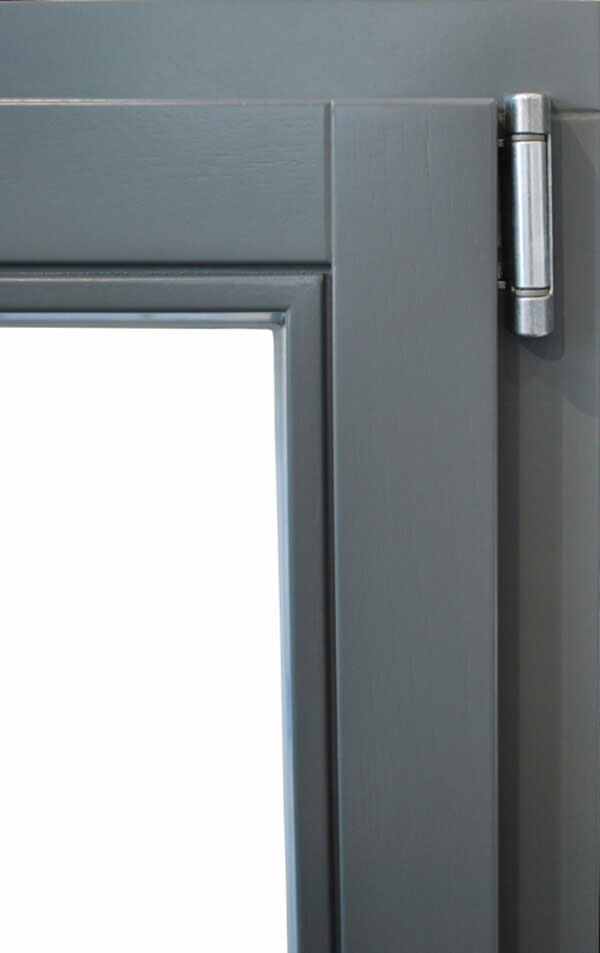
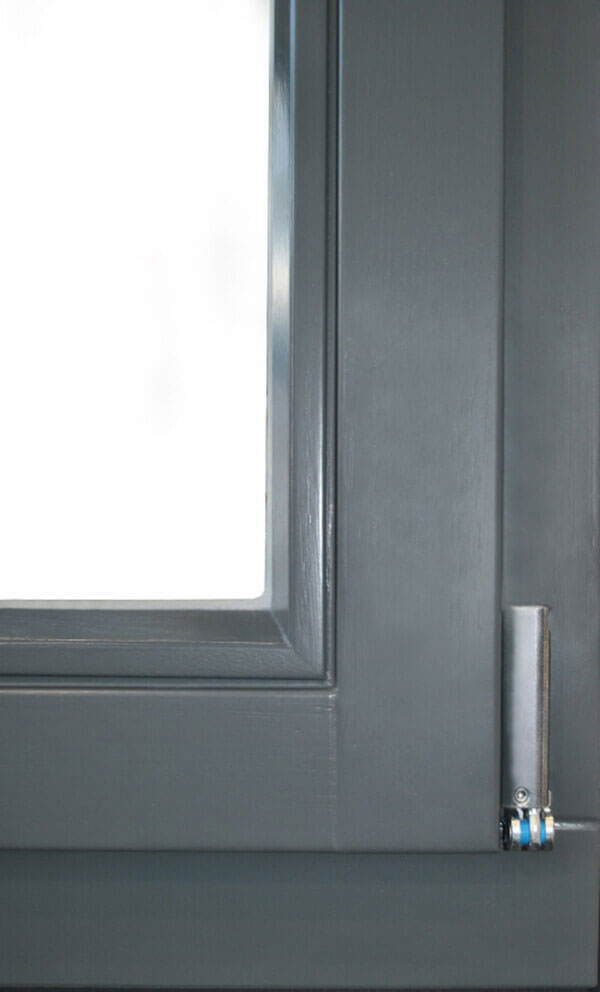
The load capacity of the hinges from the Siegenia TITAN AF system is 130 kg. The standard range of colours includes the following variants of covers: white, silver (F1), titanium (F9), brown, black, as well as old gold (F4).

Hinges for heavy sashes – TITAN heavy duty
The TITAN heavy duty hinge side combines three essential aspects: high load capacity, high safety, and an attractive design.
Characteristics of TITAN heavy duty hinges:
- the material is an innovative combination of steel with pressure casting, which guarantees exceptional wear resistance;
- the presence of a mechanism that slows down the closing/opening of the sash, which positively affects the safety and comfort of use of the structure;
- bearings ensuring light operation of very heavy sashes;
- increased pressure of the sash, which enables the elimination of thermal bridges;
- the permissible weight of the RU sashes is 200 kg;
- the permissible weight of the R sashes is 300 kg.
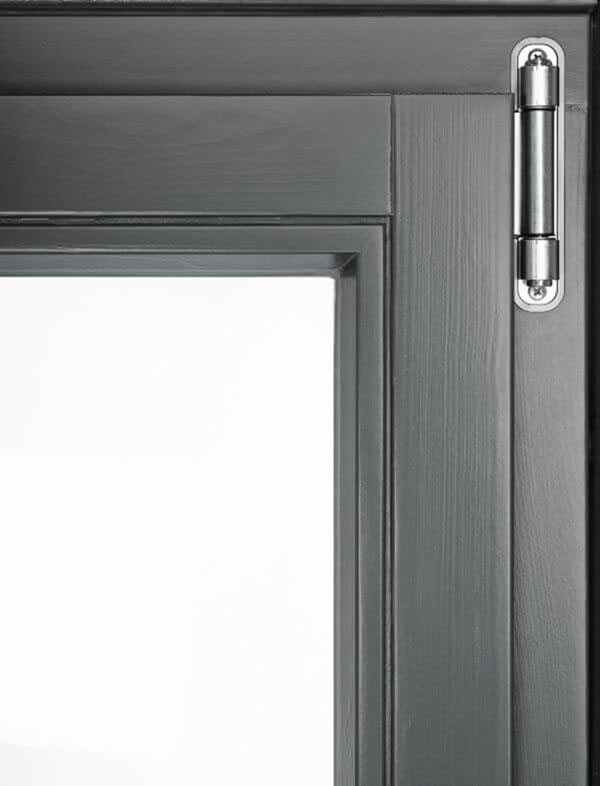

Hidden hardware
Available technological solutions include the possibility of using hidden hinges with a load capacity of 150 kg. The use of these components increases the aesthetic value of the joinery, and avoids the problem of matching the colour of the covers to the window finish and the handle. Importantly, hidden hinges make it easy to keep the construction clean. Removing any impurities from traditional hinges requires more time.
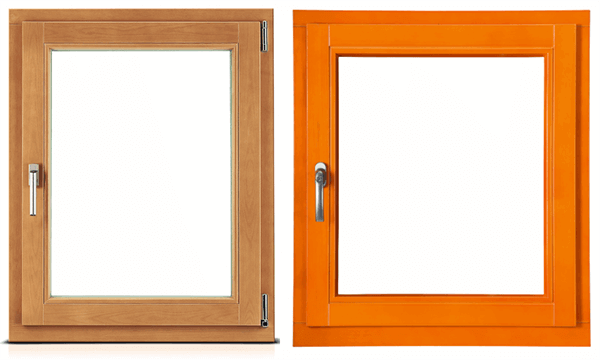
The hardware elements are hidden in the space between the sash and the structure frame. As a result, they cannot be seen when the window is closed. It is worth emphasizing that these elements have a positive effect on the tightness of the joinery. In addition, they increase the resistance of the structure to burglary, as well as improve protection against external noise.
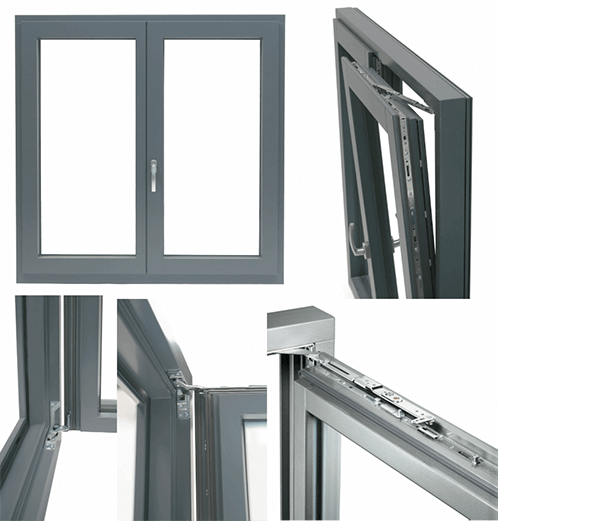
These components can be used in all windows and balcony doors. They enable the construction of a 3-sash window with two flying mullions. Thanks to this, the structure is fully symmetrical, and each pane has the same surface.

DSG gears for flying mullions
The use of flying mullions instead of fixed ones increases the ratio of the pane area to the window area when the structure is closed. Additionally, due to the lack of a fixed mullion, a greater width in the light of the frame is obtained (visible after opening the window). The opening of the structure with a flying mullion is convenient thanks to a special lever with which the DSG gears are equipped. The striker plates integrated with the gear have a special lock. In the event of an attempted break-in, it prevents the striker plates rollers from moving.
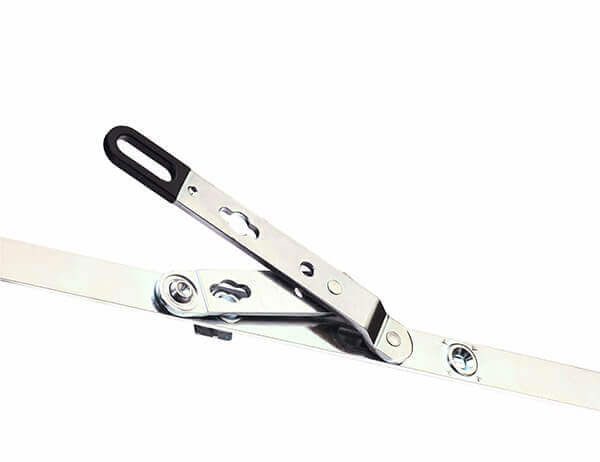
In addition to the standard gear lever, an option with an extended handle is also available. This elegant and functional solution ensures easy handling of large-size sashes. Due to the large number of striker plates, it guarantees a high degree of anti-burglary of the structure.
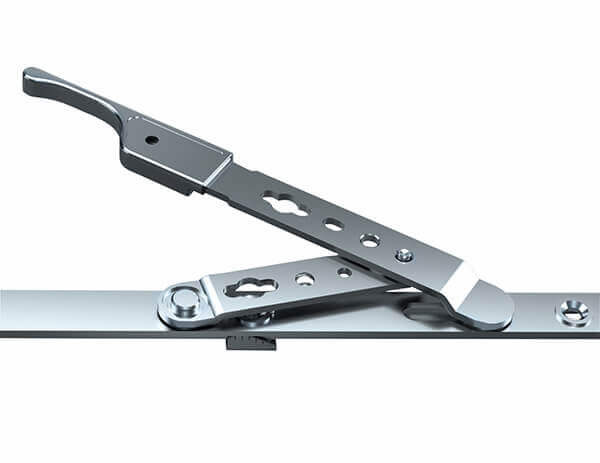
Central handle
A way to achieve a harmonious appearance of the joinery is to use a central handle. This element is mounted in the axis of symmetry of the flying mullion, between the active and passive sash. It is a solution dedicated to customers who value regularity and symmetry. The use of the central handle guarantees the optical arrangement of the handle in the symmetry axis of the window.

User safety and user experience
Hardware for wooden and wood-aluminium windows has a huge impact not only on the appearance of the joinery, but above all on the comfort of use and user safety. The functionality of the structure is influenced, among others, by a top stay, as well as a corner with a sash lift roller.
Mishandling device
This element is standard in every sash if there are no technological contraindications. Thanks to it, the handle can only be turned when the sash is in the frame. In the case of an open or tilted window, it is not possible to turn the handle. This solution is designed to protect the user from being crushed due to accidental detachment of the sash.

Sash lift roller (Inliner)
Component integrated with the lower corner. It enables smooth placement of the sash in the frame throughout the service life of the structure. Due to the location at the bottom of the sash, the lift roller functions even when the sash is tilted. Importantly, this element can be used in trapezoidal and arched windows, as well as in active and passive sashes (in the case of double-sash windows).

Optimal tilt stay lead-in and anti-slam device
The standard stay of the Siegenia TITAN AF system is distinguished by, among others, a large range of supporting the closure of the sash. Due to this, closing the sashes with a very large width does not require much effort. An important advantage of the element is also the integrated protection, thanks to which the tilted sash does not slam shut as a result of a draft.
Optional balcony snapper
Element that protects the balcony door in case of violent gusts of wind. It maintains the closed position of the structure. Thanks to it, the user can go out to the balcony and not worry about the door. The animation explains how the component works.

Sash brake
A hardware component controlled by a handle. With its help, the position of the open sash is determined and it is secured against unintentional closing or opening. The exact possibility of its application depends on the window profile used – it is installed in window sashes when the sash dimension is at least 810 mm (approximate value, depending on the window profile).

TBT – Tilt Before Turn
A solution that allows the window to be tilted before opening it. TITAN AF TBT hardware for wooden windows in combination with a special handle (e.g. by Hoppe) allow for easy tilting of the sash (room ventilation). The window can only be opened after unlocking with the key. This solution works, among others in places where there are children. Thanks to TBT, the window cannot be opened without the guardian’s knowledge and consent.
The TBT system is used in private homes and apartments, as well as in public utility buildings. In the case of such institutions (e.g. schools or hospitals), it is important not only to protect against burglars, but also that the window cannot be opened by unauthorized people or children.

Hoppe window handles with TBT function come in two versions – TBT1 and Secu TBT®.

Characteristics of TBT1 handles:
- have a small gap between the closed position and the tilted sash;
- they allow the interior to be ventilated without the need to unlock the closing cylinder;
- in order to turn the handle from the tilted position to the open position (from 90° to 180°) it is necessary to unlock the cylinder.
Characteristics of SecuTBT handles®:
- improvement of traditional TBT technology;
- guarantees even greater security – the handle can be locked in the closed position with the use of a key (this way the joinery gains additional protection against burglary);
- tilting the window requires unlocking the handle with the key;
- the handle turned to the tilt position remains automatically locked in this place – no need to use a key;
- turning the handle from the tilt position to the closed position does not require unlocking with the key;
- securing the structure against changing the position of the handle into the open position involves the necessity to turn the handle and the key at the same time.
Ventilation options
One of the important functions of the joinery is the possibility of airing the rooms. The Siegenia TITAN AF hardware for wooden windows allows the structures from the MS Windows and Doors range to let in air in a manner tailored to the user’s needs.
Microventilation
A practical, uncomplicated mechanism that allows for a small gap. It is achieved by turning the handle 45° up from the “open” position.

Summer-winter night vent
Component that allows to change the degree of tilt of the sash. Thanks to it, the amount of air entering the room through the windows can be adjusted to the weather. The ingenious design of the element allows to adjust the degree of tilt to the season without the use of any tools.
Multi-position tilt
This solution consists in the use of a special striker plate, which works with the upper corner adapted to it. Thanks to these elements, the degree of ventilation can be adjusted depending on the current needs of the user.

Aeromat MINI
Aeromat MINI is a trickle vent with an external air inlet, which is mounted in the upper part of the window.


Ventilation is the equalization of the pressure difference between the air outside and the air filling the interiors. The air supply can be adjusted in two ways: manually or by using the optional rotary lock. As a rule, air flows from the outside to the inside.
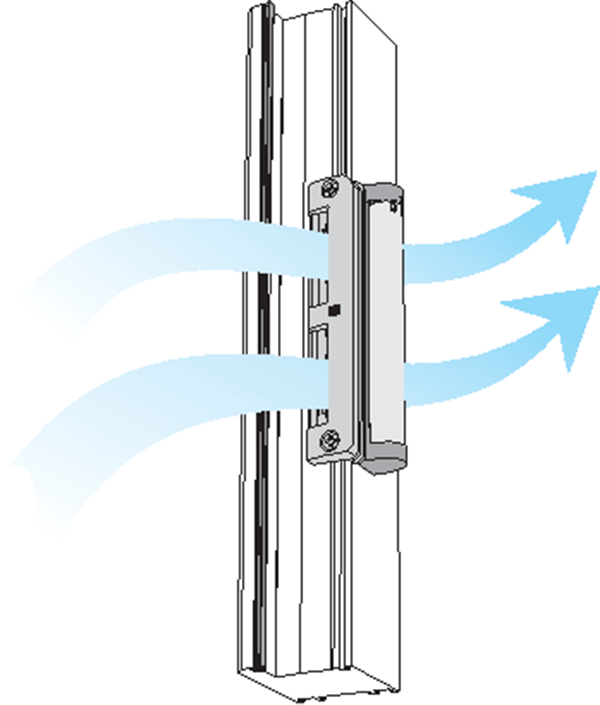

Importantly, in high-pressure winds, the self-adjusting airflow limiter limits excessive airflow into the interior and reduces drafts.

Anti-theft security and access control
The most important aspects influenced by hardware for wooden and wood-aluminium windows is the protection of the structure against burglary.
Anti-burglary security packages
Modern joinery not only protects the interior from heat loss and provides the right amount of light, but also affects the protection of the room from burglary. Security packages are responsible for protection against intrusion into the house, the burglary resistance class of which is defined as RC1 or RC2.


KoPiBo anti-burglary mushroom cams
Components at every locking point of the Siegenia TITAN AF hardware. They precisely match the striker plates they cooperate with. They are characterized by durability and automatic height adjustment ensuring smooth cooperation with the elements mounted on the frame. Accurate cooperation takes place even when the dimensions of the window are subject to subtle changes resulting from the increase in temperature.

Security striker plate
Reinforced security striker plates are screwed to the frame of the structure. They cooperate with the above-presented KoPiBo mushroom cams.
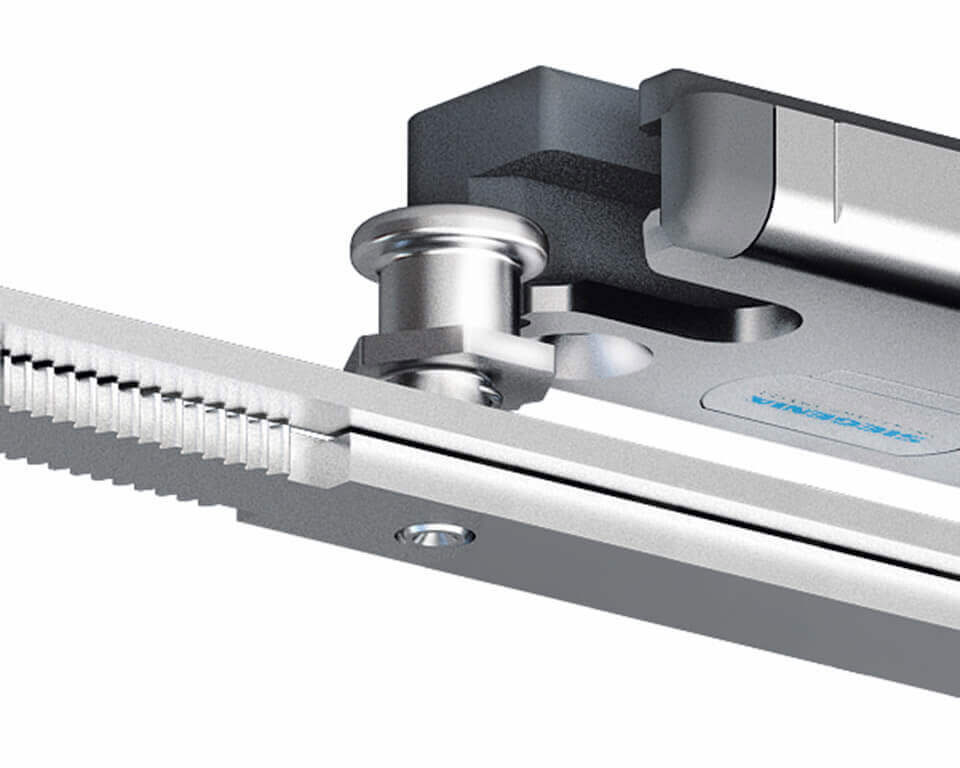
TITAN vent secure
A solution that requires the use of appropriate striker plates. Thanks to it, it is possible to obtain a small tilt (10 mm), and at the same time keep the structure resistant to burglary (class RC1 or RC2). An important aspect is the possibility of ventilating the interior even during heavy rainfall or when none of the tenants is at home. The functioning of TITAN vent secure is shown in the video.
Window opening blockade
Component that provides protection against unauthorized opening as well as greater security. After mounting and locking with a key, it only allows you to tilt the window. This solution is very often used in children’s rooms, schools, offices, as well as in public places. Available colour variants: white, brown and silver. The element is also available in a hidden version.
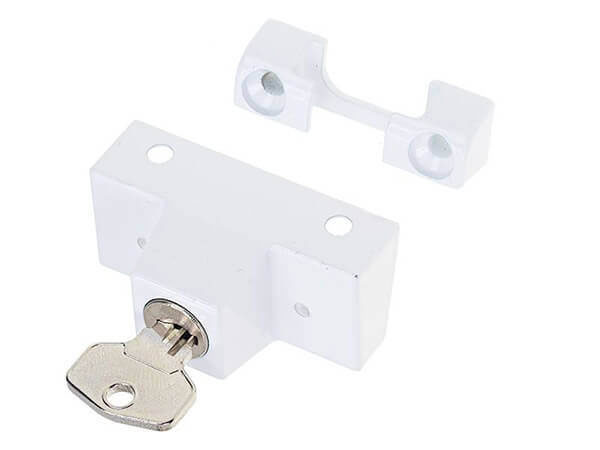
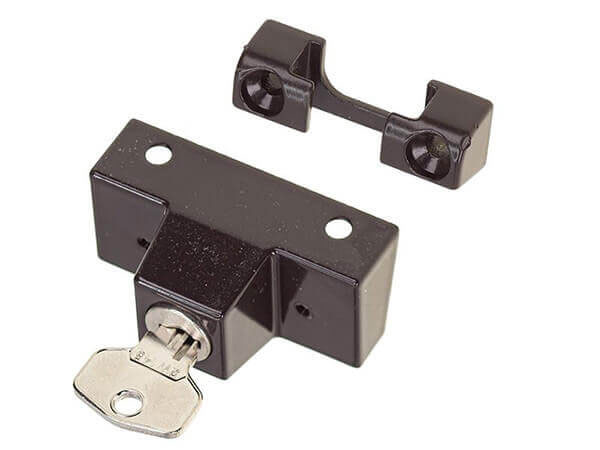

Gears with cylinder lock
Increasing the safety of balcony doors can be realized with the help of gears with cylinder lock. To make it technologically possible, a wider sash profile should be used.

Aerocontrol – reed switch
The reed switch is an addition to the mechanical protection of windows and balcony doors. It provides electronic protection of the structure against burglary. This element acts as a signal transmitter within the anti-theft alarm system. It comes in different versions. For example, it can perform additional tasks, such as controlling air conditioning and heating while ventilating the room.

Aerocontrol is a magnetic switch that is used in conjunction with a magnet. The magnetic field keeps the contacts in the reed switch closed or open. The type of contact depends on the switch version used. The change in the position of the magnetic field (resulting from the physical displacement of the magnet) contributes to the change of contact in the reed switch. Four or six-wirecables (depending on the version) are responsible for the connection of the switch with the receiver.


Examples of reed switches are presented in the graphic below.

Hardware for wooden windows – security packages
Wooden and wood-aluminium windows hardware can significantly increase the safety of the structure and, consequently, protect the interior from the burglar entering it. In the structures from the MS Windows and Doors offer, special security packages can be used, the burglary resistance class of which is marked with the RC1 or RC2 symbols.
Construction of the RC1 package
Wooden windows from the MS Windows and Doors offer can be equipped with an optional, extended security package RC1. It includes the following:
- Four security striker plates – they work with hardened mushroom cams, which are located in the components that form the hadware of a sash. Two security striker plates are attached to the lower part of the frame. In this way (when choosing RC1 class) all tilt and turn sashes and sashes in flying mullions are protected.
- Handle with rotation lock, additionally secured with a key – this element does not allow the window to be opened by trying to forcely move the bolt captured from the outside. It also prevents getting inside by turning or breaking the handle by reaching it after cutting a hole in the glazed unit.
- Anti-drill plate – a component attached to the gear cassette. It covers the spindle of the handle from the outside. In this way, it protects the room from intrusion by using a small-size tool that would you to expose the gear and then open the window.

RC1 package – when is it worth using?
The use of the RC1 package will prove useful when the location of the joinery is favorable for a potential burglar. According to the PN-EN 1627 standard, this person is defined as an accidental person who tries to break in at an indefinite time. During his activities, he uses simple tools and physical strength. Importantly, he does not know how the window is secured or what may be in the room. In this situation, the RC1 package elements perform the following functions:
- Security striker plates – make it difficult to push the sash out by kicking or attacking with the body;
- Handle with Secustik mechanism and additional protection in the form of a key – it does not allow for force unlocking of the hardware;
- Anti-drill plate – protects the gear mechanism when trying to expose it, e.g. using a drill.
Construction of the RC2 package
The second solution, available in the MS Windows and Doors offer, is the RC2 security package. It is formed by the following elements:
- Security striker plates – work with hardened mushroom cams, located in the components of the sash hardware. In this way (in RC2 security level) all tilt and turn sashes and sashes in flying mullions are secured.
- Attested, safe handle with a key – resistant to a torque of 100 Nm. The mechanism used in it does not allow the window to be opened by forcing shifting the bolt, gripped from the outside (with the use of tools specified for the RC2 class).
- Anti-drill plate – a component located on the cassette of the gear. Its task is to cover the spindle of the handle from the outside. Because it does not allow the gear nut to be exposed and the window to be opened, it secures the room against a potential burglar.
- Optionally, a P4A class glazed unit, the outer part of which is laminated glass. It consists of two glass panes and four layers of PVB foil.
- Optionally – a bonded glazed unit. This is an additional protection against the glazed unit being pushed out, which stiffens the window structure.
The arrangement of the security striker plates (in red) is shown in the graphic below.

RC2 package – when is it worth using?
It is worth choosing the RC2 package in a situation where the position of the window structure may favor a potential burglar getting inside with the use of specific tools. For example, buildings located far away from other households are more likely to be intruded. The conditions that facilitate the actions of the criminal also include the location of the joinery on the ground floor, facing the garden surrounded by a high fence. There is also a greater risk of burglary in the case of windows covered by a farm building or vegetation. The description of the burglar is similar for both of the burglary resistance classes presented. This person is random and does not know the methods of securing the structure or what is inside. The difference between the RC1 and RC2 packages is that in the RC2 class, the definition of a burglary includes the use of tools (e.g. a screwdriver) for no more than 3 minutes.
Main differences between security packages
The definition of burglar in RC2 class includes the use of tools. This person may therefore burden the joinery elements to a greater extent. Due to this, the RC2 package uses a greater number of security striker plates, which make it difficult to balance the sash. The closed reinforcement, on the other hand, is responsible for the stable fastening of the elements that anchor the frame to the reveal. The handle in the RC2 package, unlike the RC1 package, is resistant to the force of 100 Nm. Additionally, in the RC2 package, you can optionally use a bonded P4A glazed unit. The tools used when trying to break into a building may exert more force on the glass than when using only physical force. Using a flat tool over a small area stresses the glass and breaks the glass. The burglar may try to get into the room through the outer sash gasket to the edge of the glazed unit using a screwdriver. Such a tool allows to gradually break the glass and reach the glazing beads. As a result, the glazed unit may be pushed out of the sash.
Characteristics of the P4A glazed unit
To prevent the glazed unit from being pushed out of the sash, bonded P4A glazed units can optionally be used in a joinery equipped with RC2 package. The outer pane of such a glazed unit is laminated glass. It consists of two panes of glass – each of them is 4 mm thick. Between them there are four layers of PVB foil with a total thickness of 1.52 mm. Such a glazed unit makes it significantly more difficult to make an opening that would make it easier for a potential burglar to get inside. The use of special adhesives between the glazed unit and the sash prevents the glazing from being pushed out.
